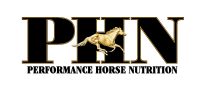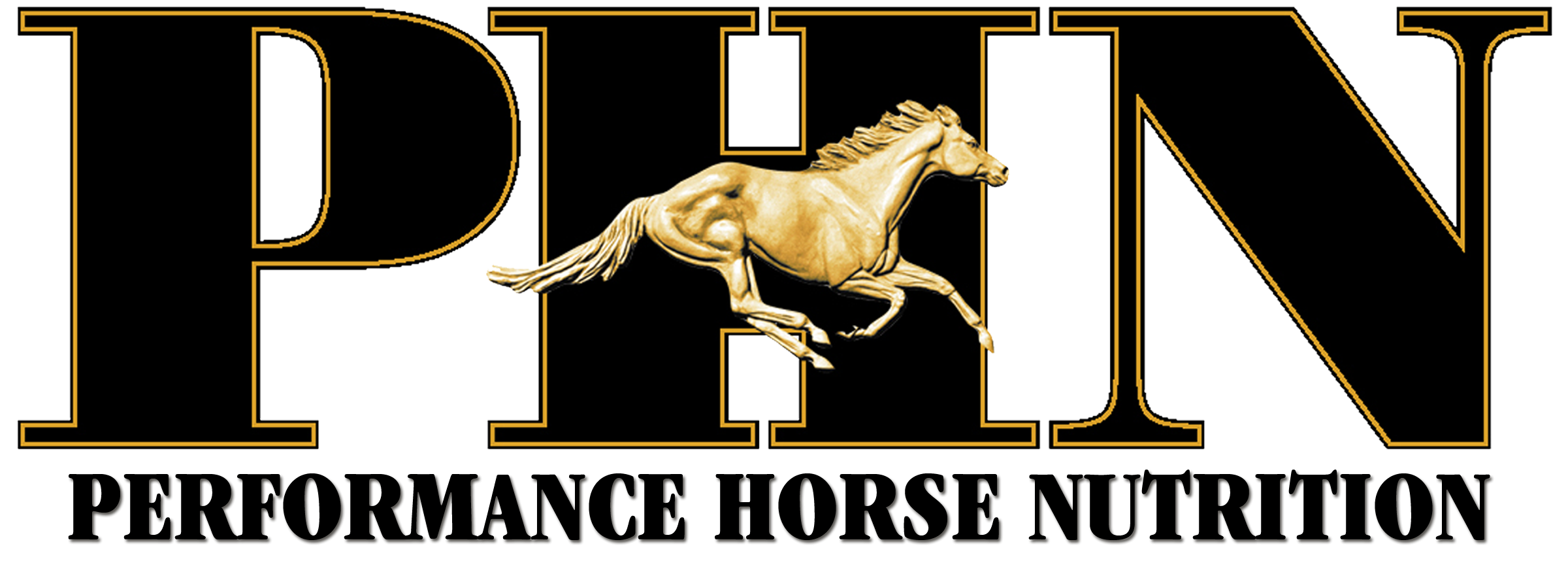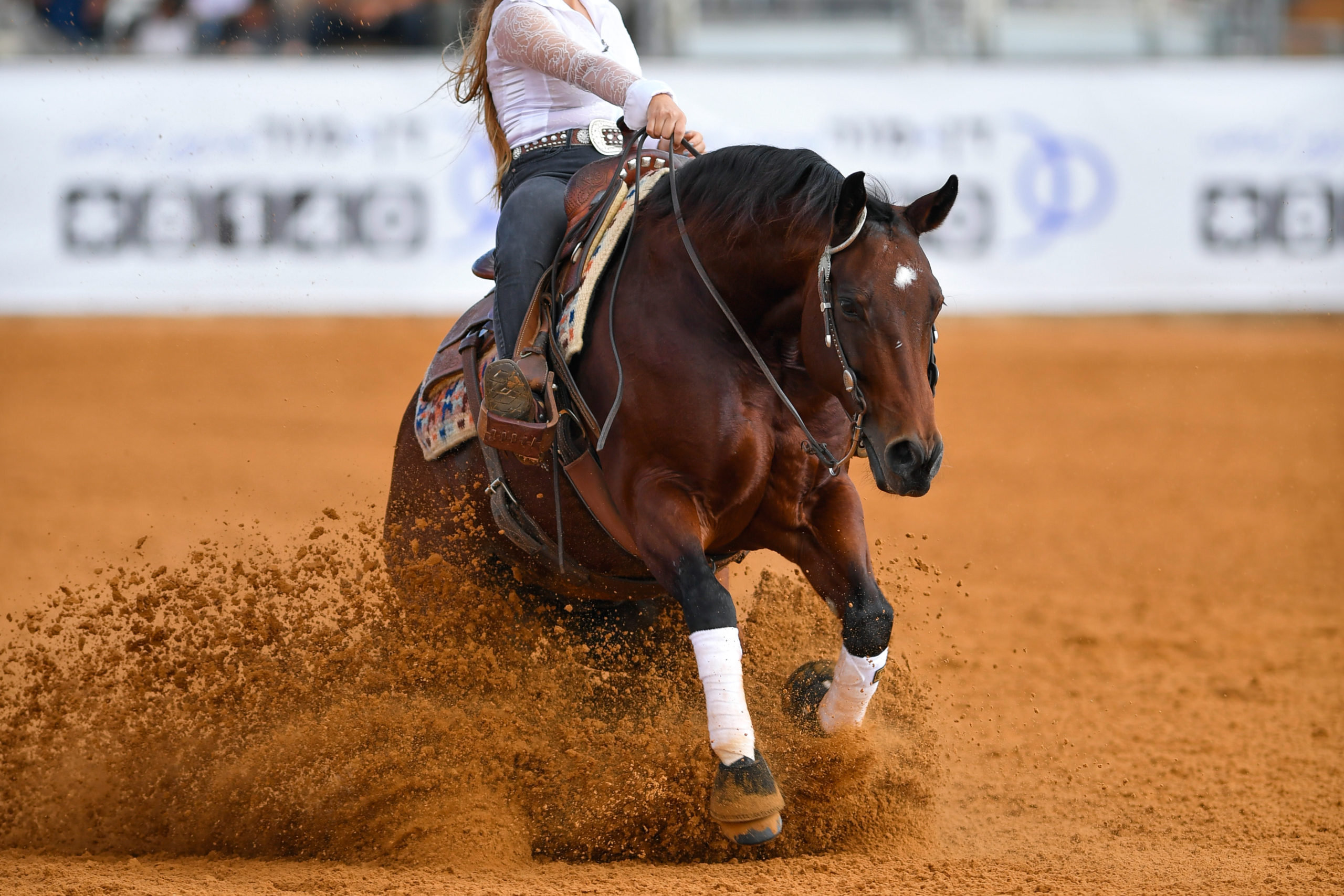FEEDING THE DISCIPLINE
WESTERN PERFORMANCE HORSE
november 2020

Written by Performance Horse Nutrition
Western performance horses are unique since they need quick bursts of energy but must also maintain control in order to be maneuvered around the barrels, work a cow or perform a precise reining pattern. No matter what the discipline however all performance horse require water, energy (calories), protein, vitamins and minerals. Nutritionists and horse owners spend a great deal of time choosing feeds and supplements in an effort to balance the diet for these essential nutrients. Providing adequate nutrition to these horses can delay the onset of fatigue and increase performance while reducing the risk of injury. Numerous scientific studies have reported that risk of injury is greatly increased when horses are tired and when the diet does not provide adequate nutrients to repair tissues. So nutrition is important and it is a topic worth discussing.
Energy
Energy is the dietary factor most influenced by work or exercise performance. Simply stated, the more work a horse performs the more energy (calories) required to fuel that work. Additional energy supplementation over what is contained in forage is required to meet the increased energy demands of western performance training and competition. This additional supplementation comes in the form of adding grain and fat to the diet. There are two basic metabolic pathways utilized by the horse to provide energy – aerobic and anaerobic. Cutting, reining and barrel racing horses all rely on short fast bursts of speed to perform which primarily utilizes anaerobic metabolism. The anaerobic pathway (without oxygen) is totally dependent on carbohydrate (sugar and starch) to produce energy. Carbohydrate from the diet is broken down and stored in the muscle as glycogen and provides quick bursts of energy to the horse. This type of energy is imperative to the barrel horse to ensure quick times around the barrels, as well as for the cutting horse to rapidly move after a cow or the reining horse to gallop, slide, stop and spin quickly.
Starch is a carbohydrate that can be broken down within the small intestine of the horse to form glucose, a simple sugar. Glucose is absorbed from the digestive system and can be metabolized immediately to produce energy, or it can be stored as energy within the body in the form of muscle or liver glycogen (sugar) or as body fat. The main source of starch in a performance horse diet is cereal grain (oats, corn or barley). Since the digestive system of a horse is designed primarily to digest fiber and has a limited capacity to digest starch, there is a restriction to the amount of grain that can be fed to performance horses. If too much grain is fed in a single meal (more than 4 to 5 lb. of grain/meal/1100lb. horse) this grain may not be properly digested in the small intestine and may result in digestive upset (colic) or laminitis as it travels further down the digestive tract.
Another way to increase muscle glycogen is to increase the fat content of the high carbohydrate diet. While adding fat will not directly increase muscle glycogen, it will give the horse more fuel during aerobic exercise so he doesn’t have to use his carbohydrate stores for energy. For the cutting horse this would occur when he is walking into the herd to find a cow, and for the reiner while he is loping or performing slower sections of his pattern. The barrel horse is an exception – their entire run is fueled by the anaerobic system. However during warm up (walking, trotting and cantering) the horse may tap into aerobic metabolism and utilize dietary fat. Fat is an extremely useful energy source that is well digested (>90%) by horses. The high calorie content of fat is very helpful in fueling the high-energy requirements of many performance horses. Performance horses can easily be adapted so they can be fed up to 2 cups of vegetable oil per day (1100lb. horse). Feeding too much fat without properly adaptation can cause diarrhea until the horses digestive system becomes accustom to the dietary fat.
Forage
The most overlooked source of energy for a performance horse is dietary fiber. The digestive system of the horse is designed to digest fiber, and hay and pasture can provide an extensive amount of energy for the performance horse. In fact, for the digestive system to function correctly horses require at least 1.5% of their body weight in hay/pasture per day. Since the fermentation of fiber is slow and continues constantly, horses get an uninterrupted supply of energy throughout the day. The use of fiber as an energy source has evolved in recent years. Today, in addition to good quality hay and pasture we have so-called super fibers that are safe to feed like hay but have the energy equivalent of oats. Examples of super fibers utilized in horse feed include beet pulp, and soybean seed coats.
Protein
The National Research Council (NRC,2007) estimates the crude protein requirement of the total diet (forage and grain combined) for mature performance horses at 9-14% depending on work intensity. Protein that is fed in excess of a performance horses’ requirement can be broken down and utilized for energy. It should be noted that not all protein sources are the same – some are of a higher quality than others. Quality of a dietary protein is determined by the amount and proportion of essential amino acids that the protein it provides. To increase the quality of protein in horse feeds ingredients such as seed meals, and lucerne meal will be incorporated. Additionally individual amino acids Lysine; Threonine and possibly Methionine may be added.
Feed Timing
One of the most frequently asked questions regarding feeding the performance horse is when to feed before a competition. Several studies found that feeding small amounts of hay prior to exercise was beneficial in stimulating water intake and maintaining hydration. However, feeding grain concentrates to performance horses is not recommended within 3 to 5 hours prior to competition. Avoiding last minute meals of grain will allow horses to properly mobilize and utilize carbohydrate and fat during exercise. Feeding post exercise is critical to the recovery of the horse. Following exercise, horses should be immediately provided with hay and water. Once the horses have consumed hay and drank water, a meal of a balanced grain concentrate should be provided within 1.5 hrs after exercise. This balanced grain concentrate should contain vitamins, minerals, and carbohydrates, fat and branched chain amino acids.
Summary
With the high levels of energy western performance horses are expending, it is important to feed the right balance of forage along with high-energy feeds. These high-energy feeds should be fortified with vitamins and minerals to meet the extra demands imposed by exercise. Remember that horses are individuals and vary greatly in their requirements for energy. Some horses become over weight when fed according to the guidelines while others lose weight. Therefore, monitor each individual horse’s condition constantly and feed each one accordingly. Working with a nutritionist is recommended to make sure the horse is provided with exactly the right nutrients to obtain the best performance possible.

